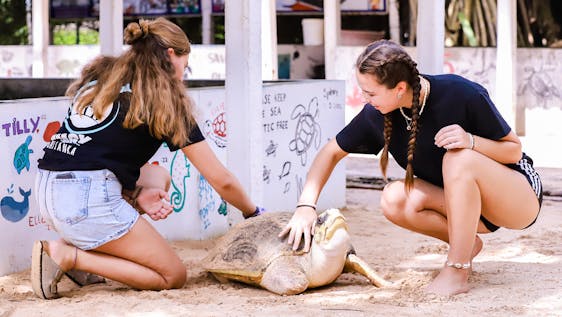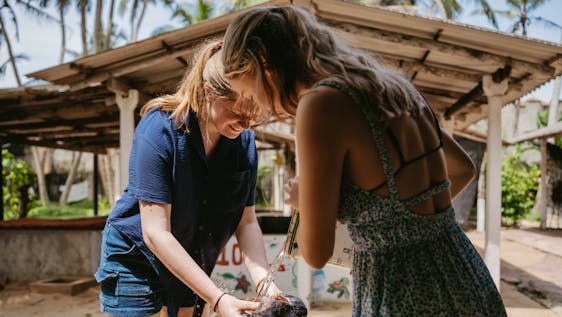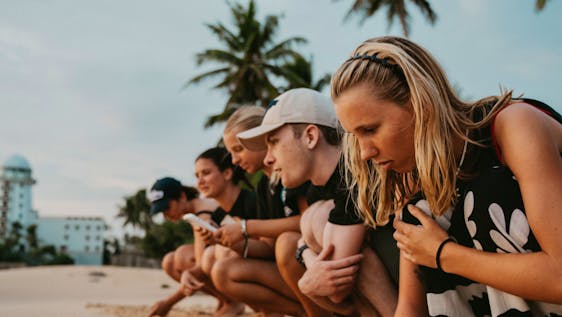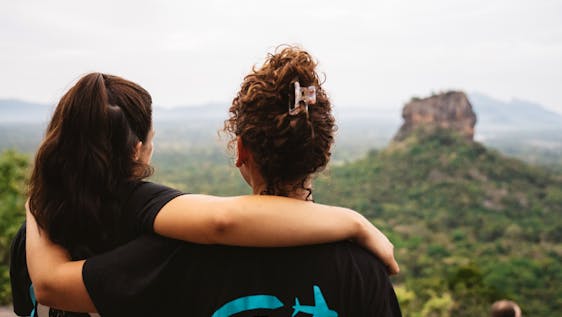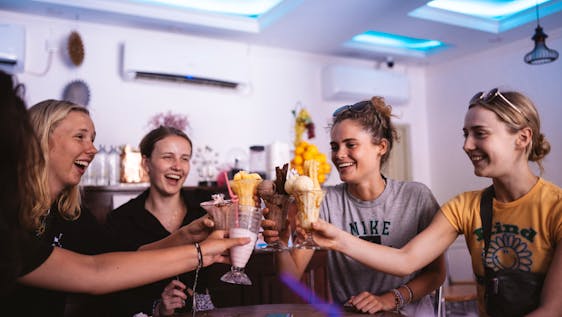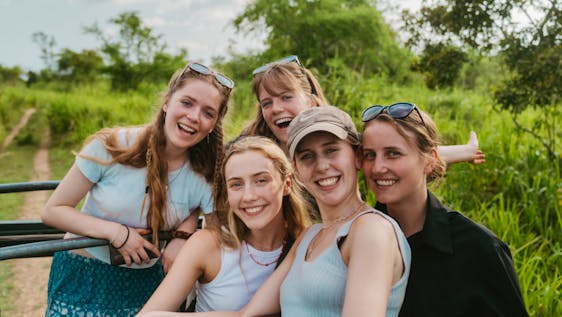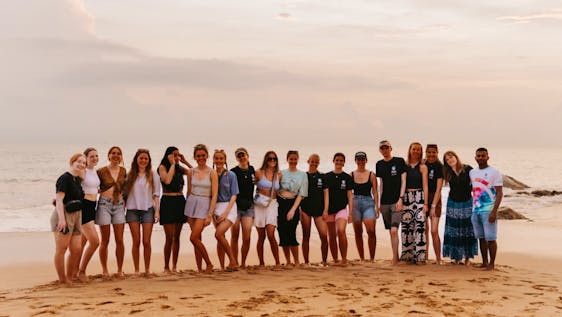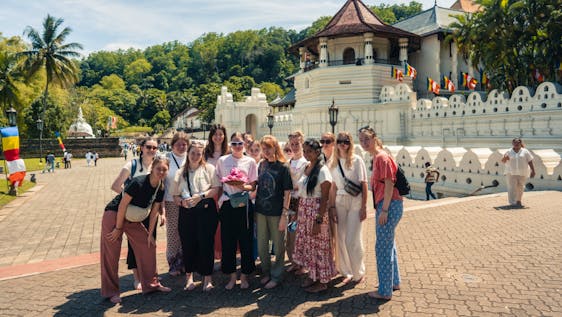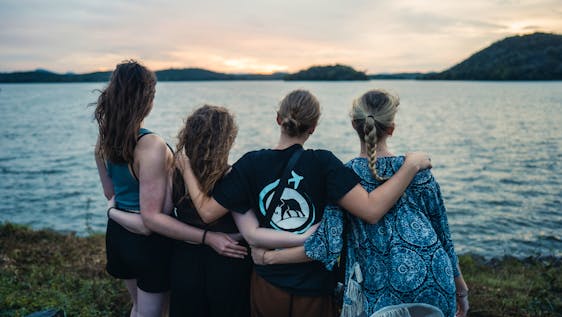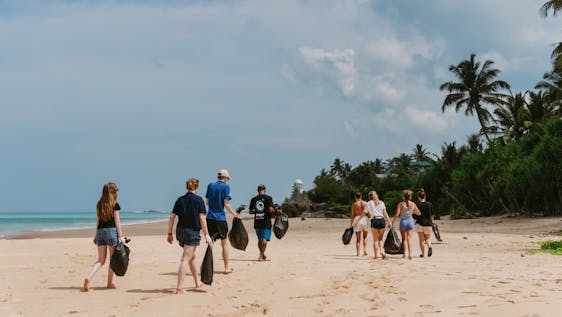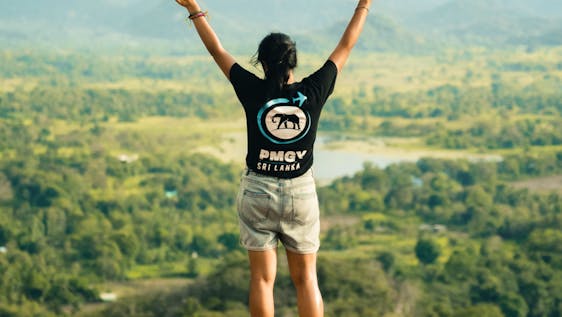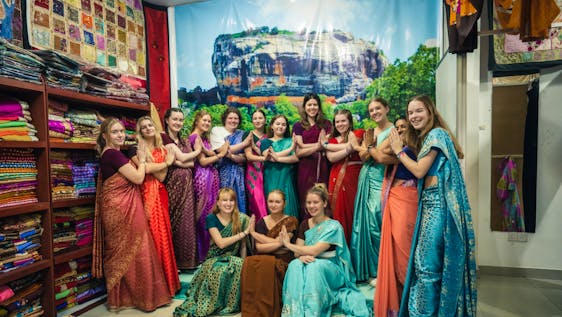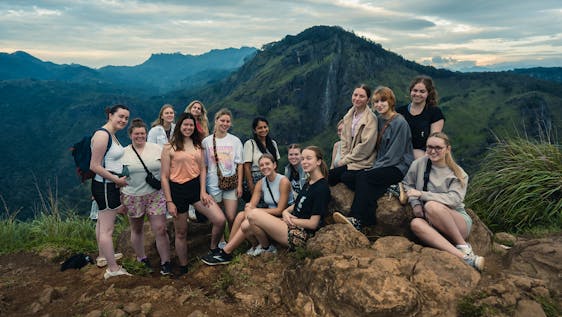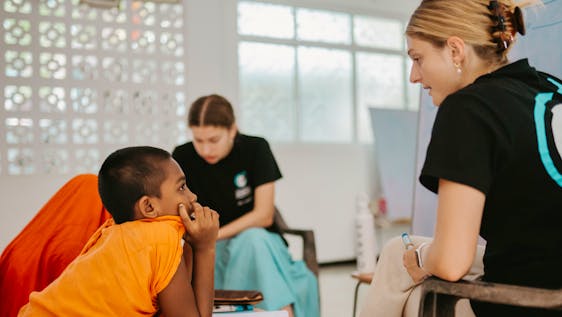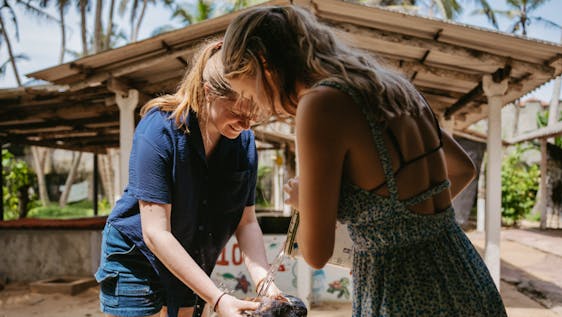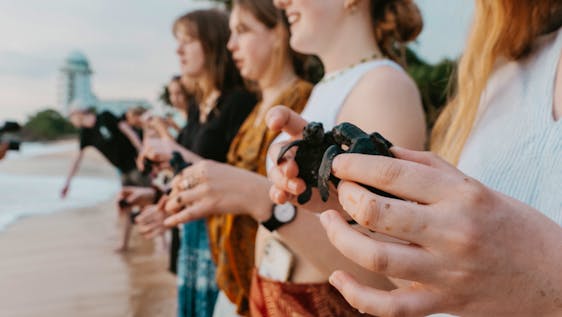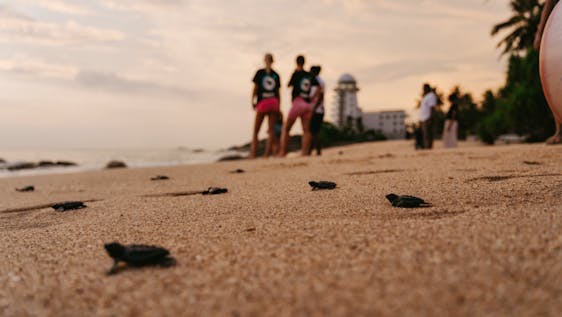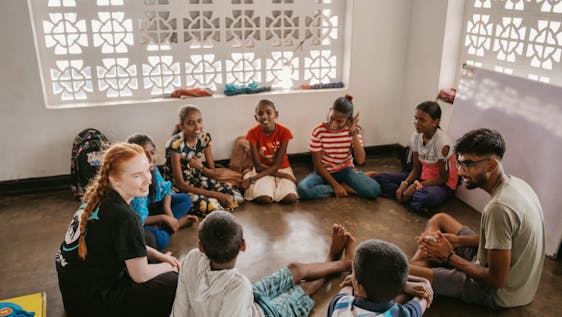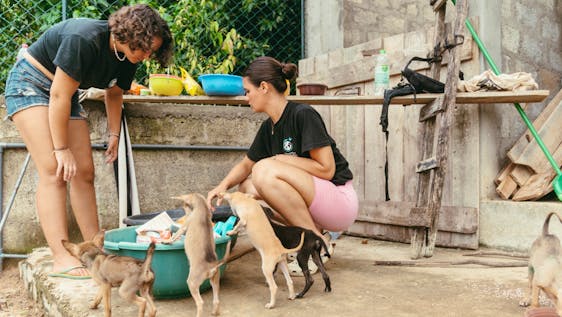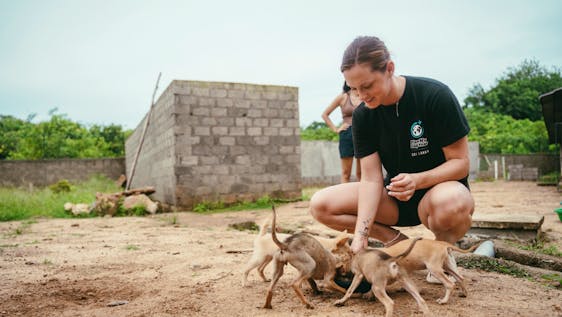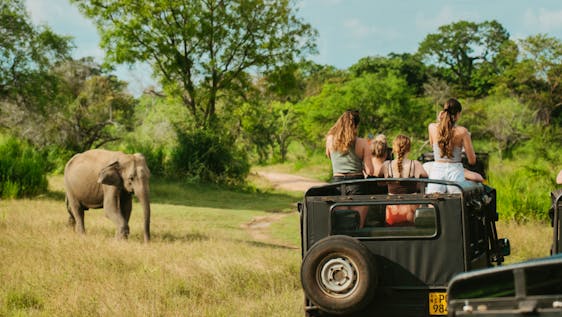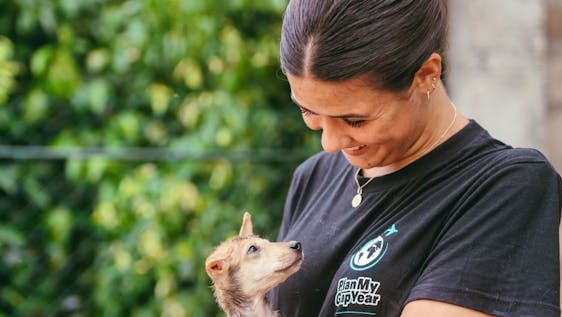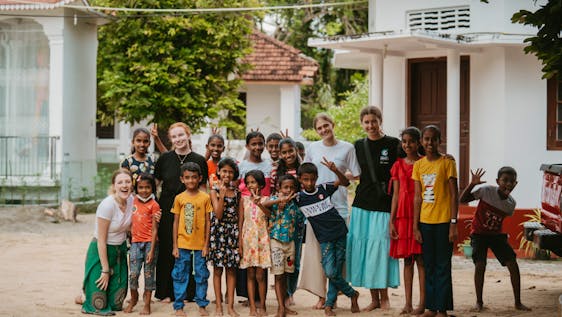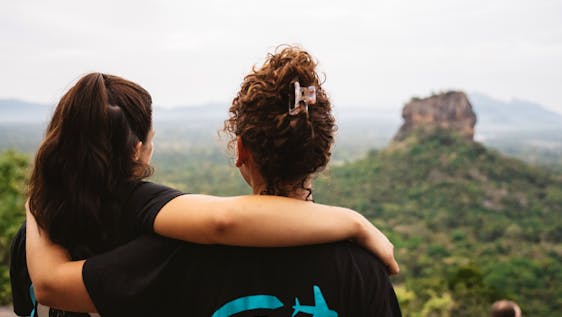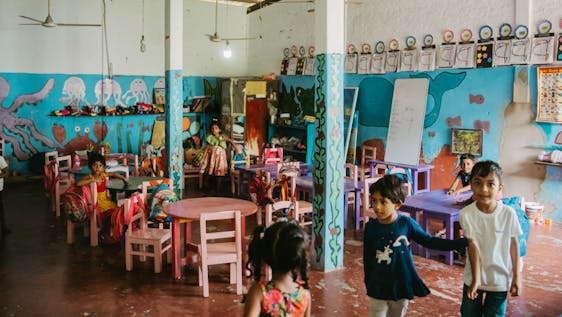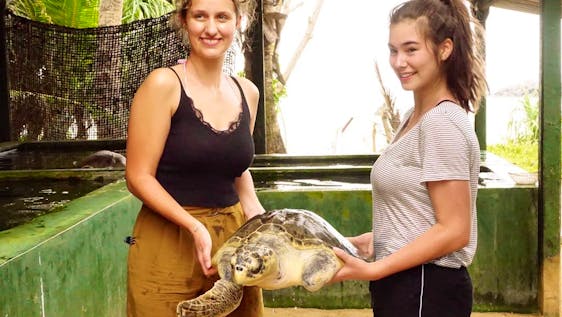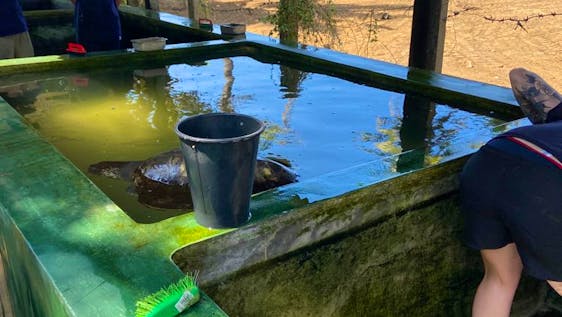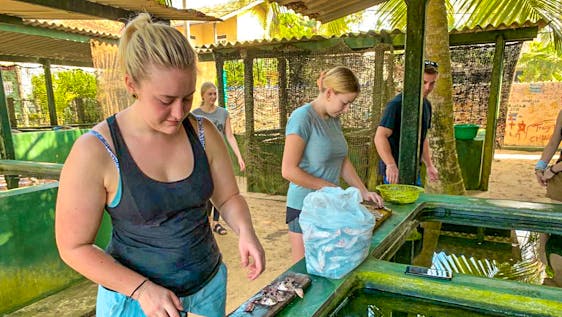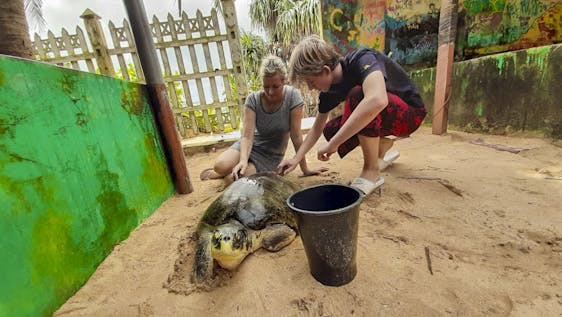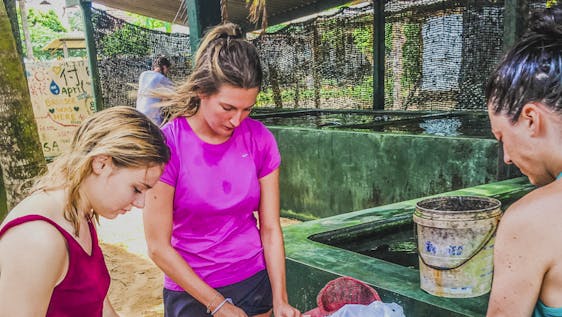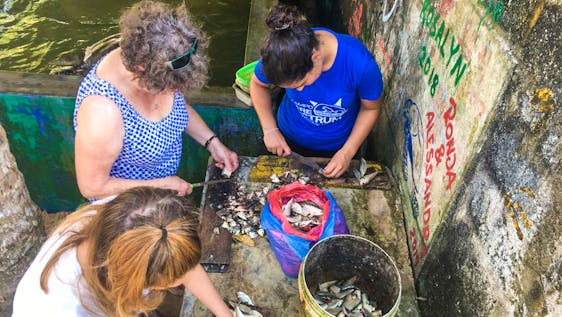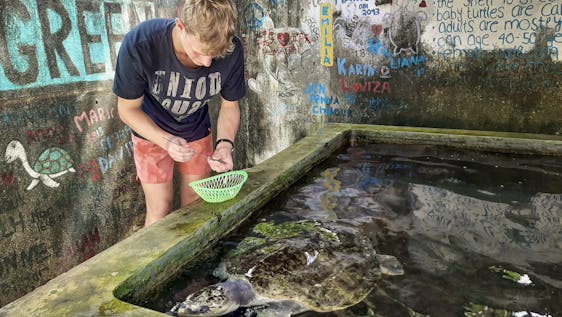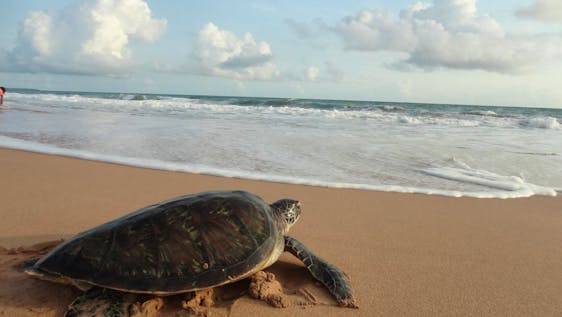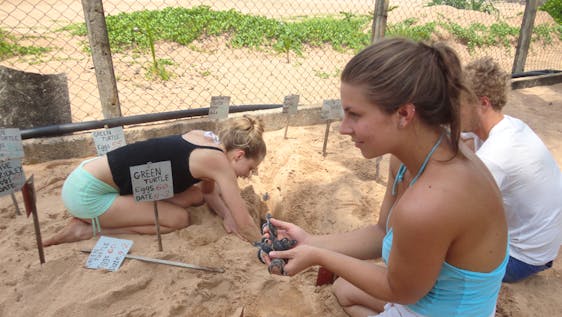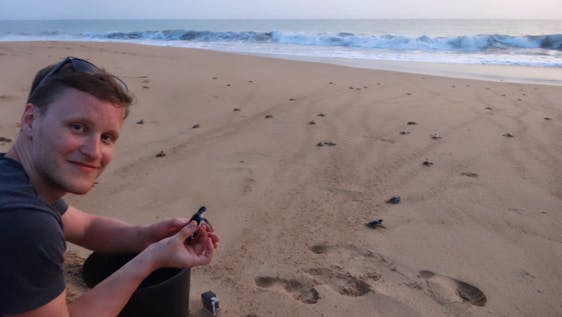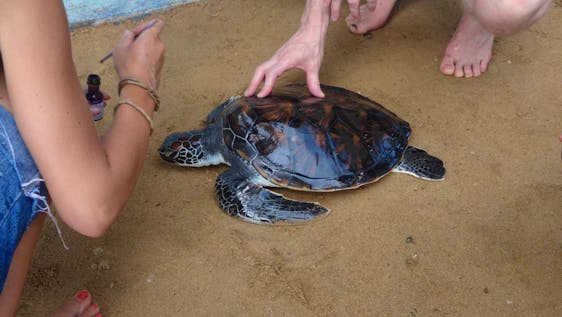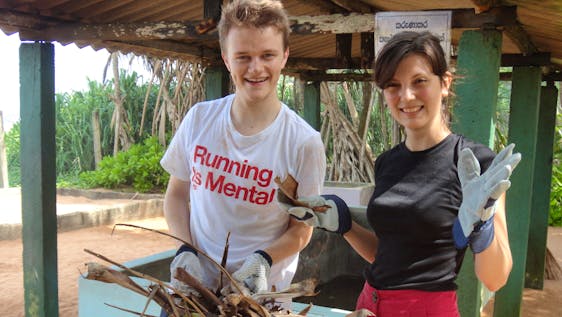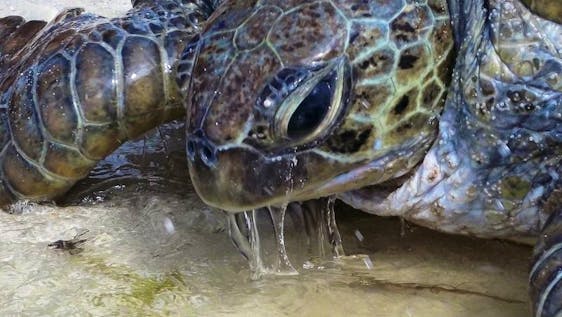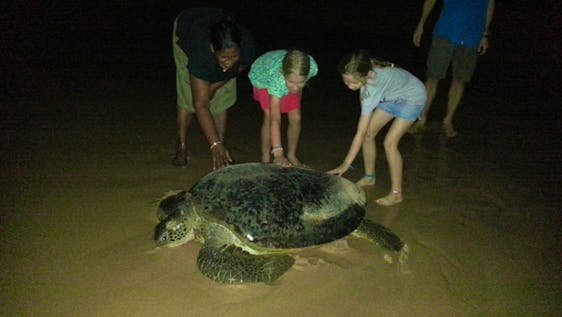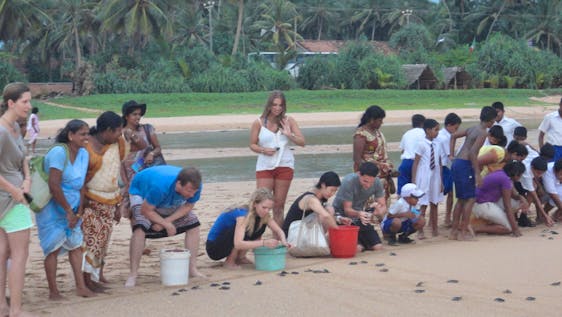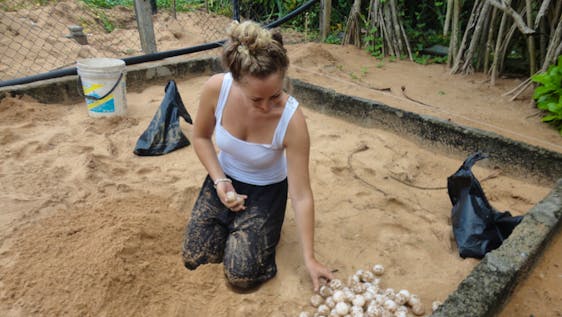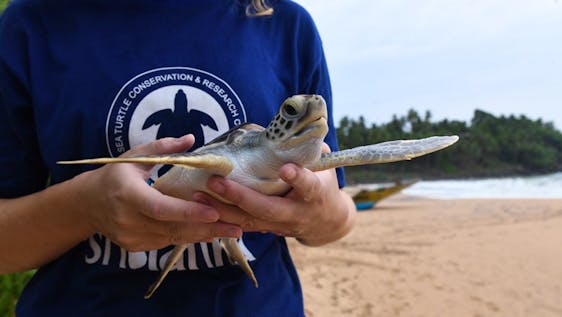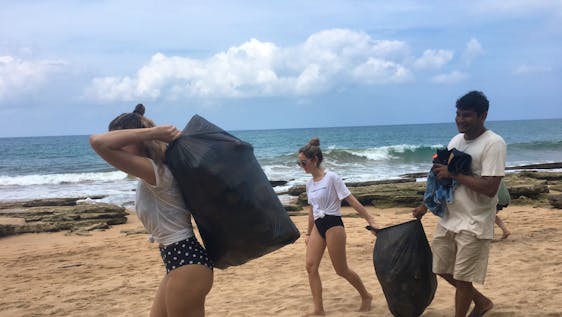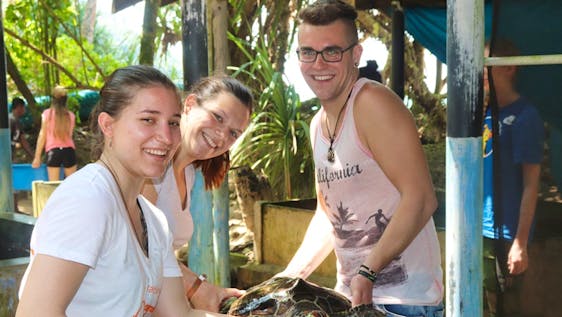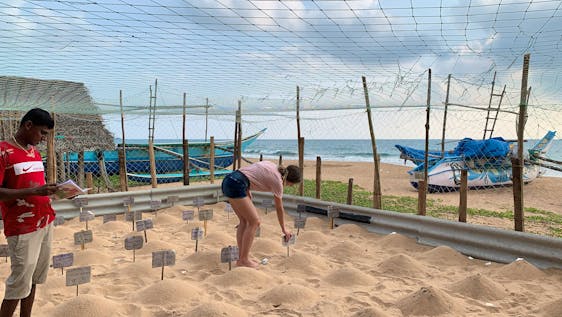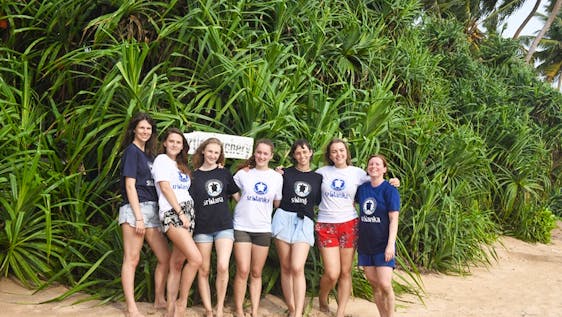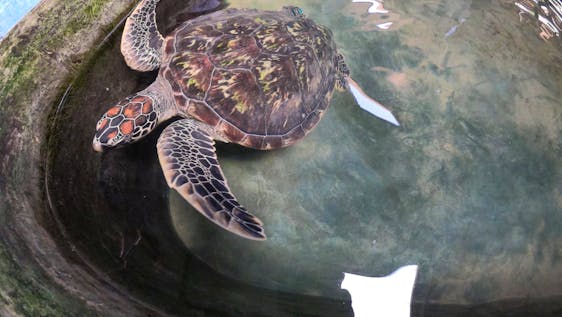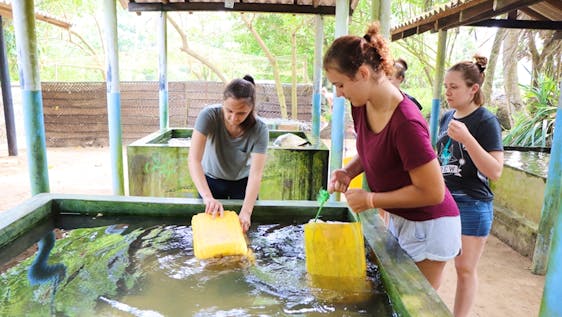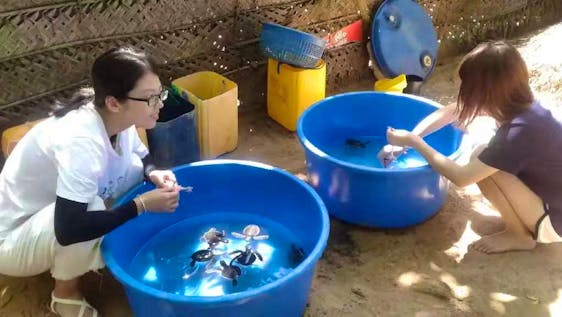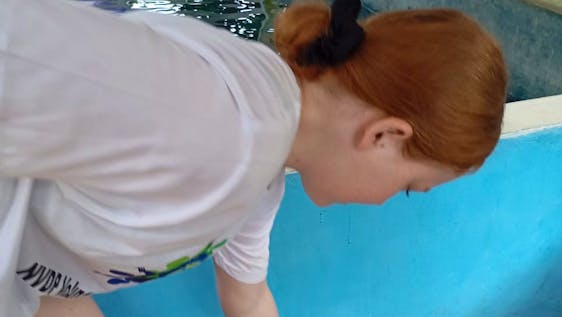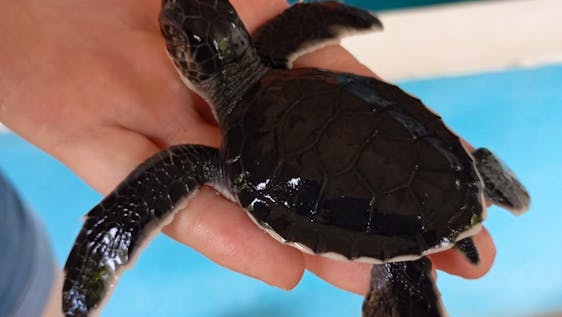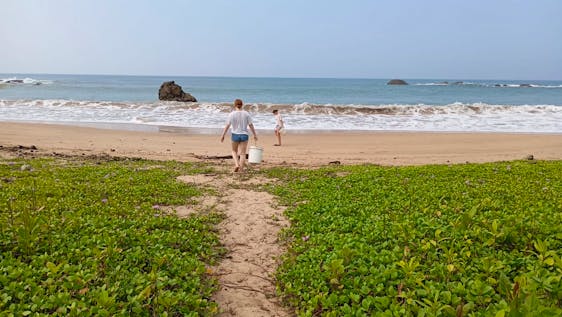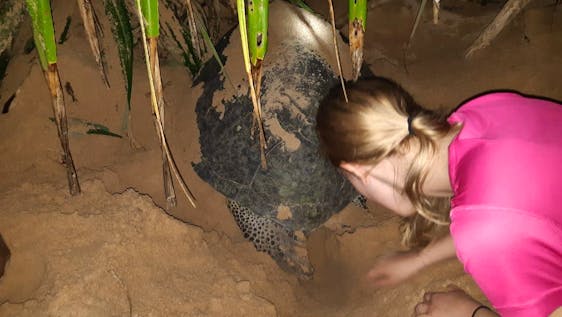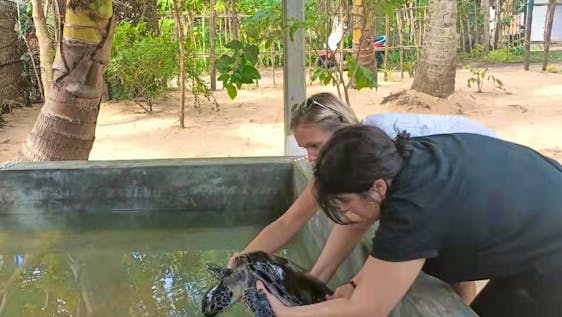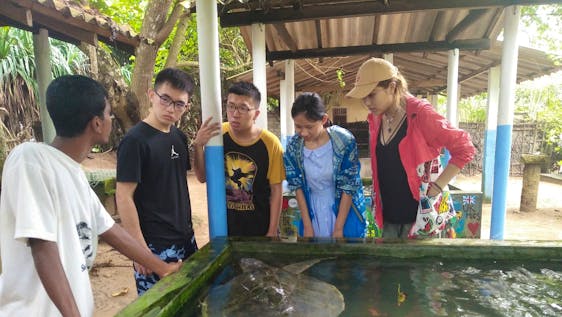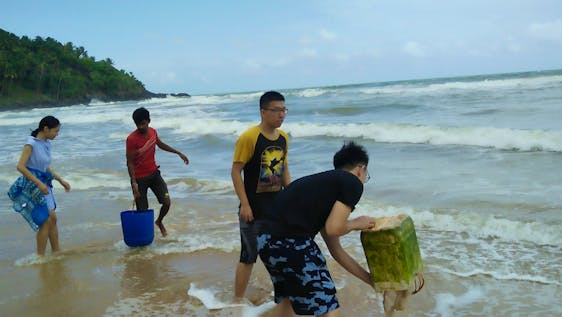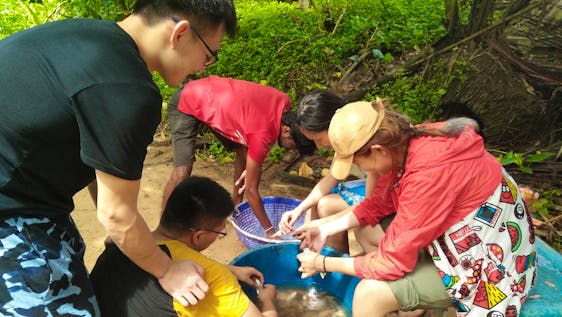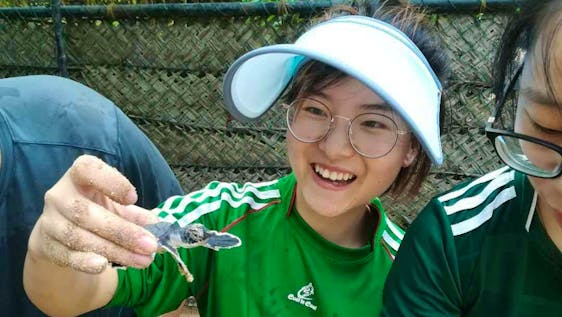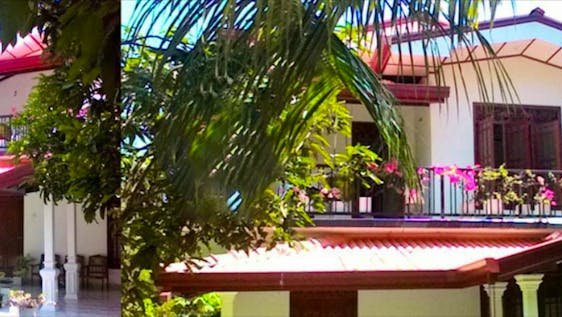Sea Turtle Conservation in Sri Lanka
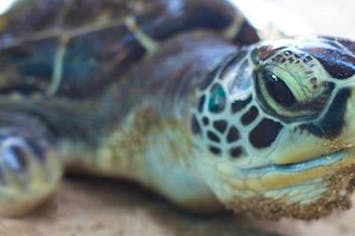
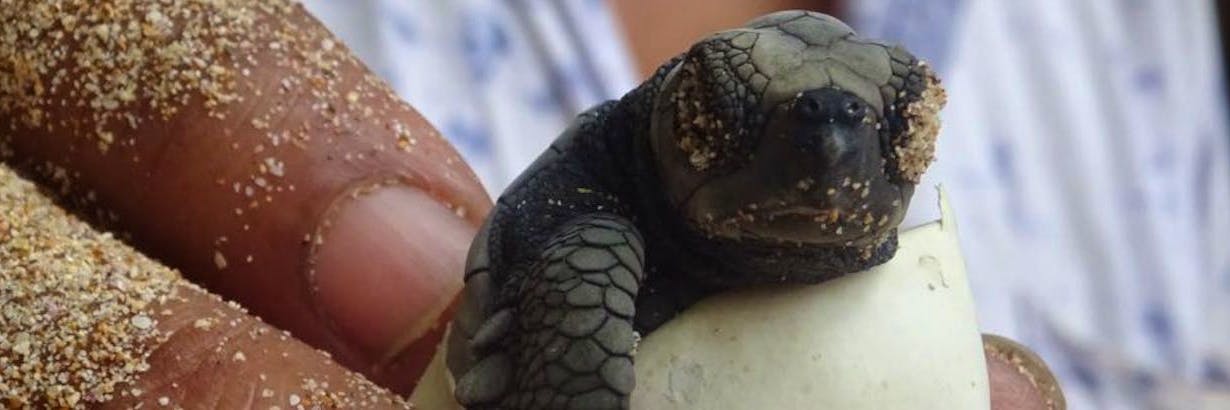
Volunteer for Sea Turtle Conservation in Sri Lanka
Sri Lanka is one of the best places to volunteer with sea turtles. Why? The teardrop-shaped island is home to five of the seven existing sea turtle species. Come delve into the colorful Sri Lankan world and give back to the local communities by supporting their sea turtle conservation work!
Sea turtles have been around for millions of years. When T-Rex and his dinosaur friends ruled planet Earth, these marvelous creatures were already gliding through our oceans. Despite their ancient existence, sea turtles are extremely vulnerable to natural and man-made threats.
Experts predict all of the different species may go extinct unless successful sea turtle conservation programs are established and maintained. Since conservation projects require extended resources many poor countries like Sri Lanka cannot afford, each international turtle volunteer is desperately needed. That’s where you come in: Book your volunteer stay in Sri Lanka now and help protect one of the few species that has been around long before us!
Sea turtle conservation status in 2025
Sea turtles spend most of their lives in the water. Throughout their lifetimes, some species cross entire ocean basins. Adult females come ashore once a year to build a nest and lay their eggs. Males, however, may not leave the ocean at all after hatching.
For that very reason, it is difficult for scientists to study these marine animals. Much of today’s knowledge is derived from analyzing and tagging females when they climb out of the water for nesting. Based upon the declining numbers of nesting females, sea turtle populations are estimated to be at significant risk of extinction.
What sea turtle species are there?
In Sri Lanka, the following turtle species can be observed: green turtle, hawksbill turtle, loggerhead turtle, olive ridley turtle, and leatherback turtle. Let’s get a closer look at what the sea turtles you may encounter in Sri Lanka look like:
Green sea turtle
These turtles with their brown, black, or dark green colored shells are the most common sea turtle species in Sri Lanka. The fat underneath the hard shell is often greenish, giving the marine animal its name. At up to 120 cm tall, the green turtle competes with the loggerhead turtle for second-largest sea turtle species. While young turtles feed on worms, jellyfish, and sponges, the adults turn vegetarian feeding on seagrasses, seaweeds, and algae.
Due to their diet, green sea turtles can mostly be found near the coast, where the water is shallow and the vegetation plenty. When females breed, they come ashore at night to lay up to 200 eggs. Before vanishing into the ocean and leaving behind their offspring, they cover the nest with sand to protect it from predators. The nest temperature determines whether the baby turtles that hatch 60 days later are females or males.
Since the adults are very large and well-armored, their only predators are large sharks and humans. Due to egg collection, illegal hunting, loss of nesting sites, and fishery bycatches, this species is classified as endangered. Green turtles have been reported nesting on Sri Lanka’s southern shores throughout the year with their peak season being January through March. The places with the highest abundance of this species are Kosgoda and Rekawa Beach.
Hawksbill turtle
These sea turtles are small to medium-sized with a curved, pointed beak that resembles one of a hawk. They can be easily distinguished from their relatives due to their colorful and irregularly patterned shell. Hawksbills are highly migratory and can be found in tropical and subtropical regions of the Atlantic, Indian and Pacific Ocean.
As omnivores, these turtles eat everything from algae to sea urchins. However, preferred meals consist of sponges that are unpalatable or toxic to other marine dwellers. Despite its protective shell, large fish, sharks, crocodiles, and octopuses hunt this species. Just like other turtle hatchlings, the little ones are vulnerable to wild dogs, birds, and shore crabs.
While it is difficult to calculate an exact population size, the hawksbill population is believed to have decreased by over 80% over the last century.That’s why it is listed as critically endangered. In Sri Lanka, the hawksbills are rarer than green turtles but can be seen nesting in Kosgoda or Bundala in the country’s South.
Loggerhead turtle
These large marine reptiles can be recognized by their big heads and reddish brown carapace. While hatchlings live on algae mats floating in warm currents, juveniles can be spotted in coastal waters. Since loggerheads are cold-blooded and need to avoid water temperatures below 13°C, they migrate to warmer waters during the winter months.
Loggerheads come to the surface to breathe every 15 to 30 minutes, but can also dive up to 7 hours without catching a breath. This turtle species eats everything from algae to jellyfish to their own hatchlings. Predators include sharks, killer whales, and seals.
Loggerhead sea turtles are classified as vulnerable. In Sri Lanka, loggerheads are very rare but have been discovered on the beaches in Kosgoda, Rekawa, and Bundala.
Olive ridley turtle
Olive ridley turtles are the smallest sea turtle species. Their shell or carapace is heart-shaped and has an olive green color. Feeding on crabs, shrimp, and jellyfish, these reptiles can be encountered in warm waters around the world, specifically in the Indian and Pacific Ocean.
This species is famous for so-called „arribadas“ where thousands of turtles come together to nest at the same time. In Sri Lanka, olive ridley turtles nest on many different beaches, including Kosgoda, Yala, and other scattered locations between September and November. It is estimated that there are around 800,000 olive ridley turtles alive today, which is why this species is only listed as vulnerable.
Leatherback turtle
These giants can grow way over 160 cm and weigh over 700 kg. Compared to the green turtle, this species has a softer, more flexible shell that resembles a leather-like texture. Due to their thick layer of insulating fat, these marine animals can survive in colder waters and dive to depths of up to 1000 m.
With jellyfish as their favorite food, these giants are quite vulnerable to floating plastic trash in our oceans. Experts rate this turtle species as vulnerable. Leatherbacks have been sighted on rare occasions on Sri Lankan shores around Kosgoda, Mawolla, or Rekawa beach.
Why are sea turtles in Sri Lanka endangered?
Despite its natural predators, humans are the biggest threat to the sea turtle in Sri Lanka. Under Sri Lanka’s Fauna and Flora Protection Ordinance, it is prohibited to kill, wound, or harm a turtle. Furthermore, turtle possession or sale, as well as taking or destroying turtle eggs is a federal offense. Unfortunately, activities harming these marine dwellers continue.
Egg collection
The collection of sea turtle eggs poses a major problem. Among Sri Lankan people, sea turtle eggs are considered a rare delicacy. Many of the eggs laid across the country’s Southern Coast are collected and sold on the market for consumption.
Sea turtle hatcheries have started buying the eggs from sellers to protect the hatchlings. However, if egg collection continues at the current rate, the local turtle population will face extinction.
Illegal hunting
Illegal hunting of adult turtles is still a thing. The reptiles are slaughtered for their pretty shells or for their meat. Especially Hawksbills often fall victim to hunters, because of their beautiful shells.
However, eating this turtle's meat can cost the capturer's life – Hawksbills eat many venomous marine animals, which can turn their meat toxic. Several people in Sri Lanka have died from eating the meat.
Loss of nesting grounds
In Sri Lanka, tourism is booming and that also means tropical coastlines are transformed into resorts. Nesting beaches are deteriorating, which means fewer baby turtles make their way into the ocean.
Fisheries bycatch
Fisheries around the world accidentally end up catching sea turtles with their fishing gear. Gill nets and fishing hooks are dangerous for adult animals drifting around in places where there is lots of fish and seafood to be caught by fishermen. A transformation of fishing gear is necessary to prevent turtles from getting caught.
Marine debris
Not too long ago, a heartbreaking video of a sea turtle with a straw stuck in its nose went viral online. This is only one example of how our plastic trash that ends up in the ocean affects marine life. Sea turtles that feed on jellyfish are particularly at risk – they mistake floating plastic bags for prey and end up dying from plastic in their bellies.
There are lots of local and international organizations that work towards the protection of sea turtle populations from these man-made threats as well as their conservation . Sadly, in Sri Lanka they often don’t have the resources to keep the sea turtle conservation projects running at full speed.
International Organizations like the World Wildlife Fund and the UN are working to reduce turtle injuries from nets and hooks by making fisheries switch to turtle-friendly circle hooks. Furthermore, helping locals find better livelihood opportunities like ecotourism can prevent poaching.
Where can I work with sea turtles in Sri Lanka?
All of our volunteer projects concerning sea turtle conservation are located close to Sri Lanka’s busiest turtle nesting beaches along the country’s South West coast. About 2 hours south of the bustling capital Colombo, you can travel to and volunteer at Sri Lanka’s serene coastline, where azure waters meet golden sand and lush rainforests.
Your volunteer work will take you to lively oceanside towns like Kosgoda, Ambalangoda, and Galle where you can mingle with locals and tourists while enjoying the pristine nature along the coastline. The towns also offer plenty of activities such as scuba diving, surfing, and nightlife. Being a sea turtle conservation volunteer has never been more fun!
How can I help to save sea turtles in Sri Lanka?
If you are done being a bystander to the destruction humans are causing for our planet’s marine life, this is your chance to make a difference. Join a local conservation project as a volunteer and help Sri Lankan people protect these ancient reptiles from extinction.
Your tasks as a volunteer
Volunteer tasks in Sri Lanka can differ slightly from project to project, but one thing is for sure: you’ll be spending much of your time on the beach with sea turtles and their eggs. Here are some examples of the work you may be asked to help with at your volunteer project:
- Care for injured sea turtles: Clean their shells, prepare their food and feed them.
- Release baby turtles: Help freshly hatched baby turtles to safely enter the ocean and start their journey into adulthood.
- Participate in beach clean-ups: Organize and help with mass beach clean-ups to make sure the shores are kept free from trash spoiling views and harming marine life.
- Relocate nests to hatchery: Spot new turtle nests, bury the eggs in the protected zone of the project hatchery and label the nests accurately.
- Maintain the hatchery: Keep the nesting areas clean, healthy, and safe.
- Raise awareness: Guiding tourists as well as locals through the hatchery and explaining the project is important to educate the public about the threats sea turtles are facing and gaining their support for the project.
- Patrol beaches: Scare away poachers and predators to protect nesting turtles and make sure they can lay their eggs in peace.
- Catch some fish: Use traditional fishing sticks to catch some food for injured turtles in the sanctuary.
- Clean and refill tanks: In some cases, sea turtles stay in tanks in the sanctuary until they are fit enough to be released into the ocean again. Keeping these tanks clean is very important for the turtles’ health.
Top benefits of becoming a volunteer with sea turtles in Sri Lanka
Why could volunteer experience with sea turtles in Sri Lanka benefit you in the future? We help you with that question:
- Become an agent of change: When you’re sitting at a bar sipping a cocktail through a plastic straw the probability of it ending up in a sea turtle’s nose seems pretty unlikely. Unfortunately, it happens. Experience yourself how human behavior impacts flora and fauna around us and how your volunteer project participation can change this.
- Improve your English: As a volunteer in Sri Lanka, you will work together with people from all around the world. Speaking English in the real world and not in the classroom is way more effective. Since English fluency is required for many jobs today, your future-self will thank you for this practice later!
- Transform into a volunteer sea turtle expert: Five out of the seven sea turtle species grace Sri Lankan shores. This is your opportunity to study these marvelous marine animals during your time at the volunteer project and learn the differences between Sri Lankan sea turtle species.
- Get to know a vibrant, exotic culture: Sri Lanka is a melting pot of different cultures and traditions. The country is deeply influenced by South Indian culture, but there are also traces of Indonesian and European elements. As a volunteer, you can get inspired by the Sri Lankan way of life!
- Collect some karma points: Working as a volunteer for a sea turtle conservation project means doing something good for people and planet. Who knows, maybe you’ll be a turtle in your next life?
Are you ready to start the volunteer experience of your life? Pack your bags, grab your passport and become a sea turtle conservation volunteer in Sri Lanka!
 Sea Turtle Conservation
Sea Turtle Conservation
 Waste Reduction
Waste Reduction
 Asia
Asia
 Southern Asia
Southern Asia
 Green Sea Turtle
Green Sea Turtle
 Sri Lanka
Sri Lanka
 Animal
Animal
 Hawksbill Turtle
Hawksbill Turtle
 Olive Ridley Turtle
Olive Ridley Turtle
 Marine Life
Marine Life
 Plastic Reduction
Plastic Reduction
 Leatherback Turtle
Leatherback Turtle
 Ocean Cleaning
Ocean Cleaning
 Animal Shelter
Animal Shelter
 Dog
Dog
 Voluntourism
Voluntourism
 Volunteer and Travel
Volunteer and Travel
 Loggerhead Turtle
Loggerhead Turtle
 Wildlife Conservation
Wildlife Conservation
